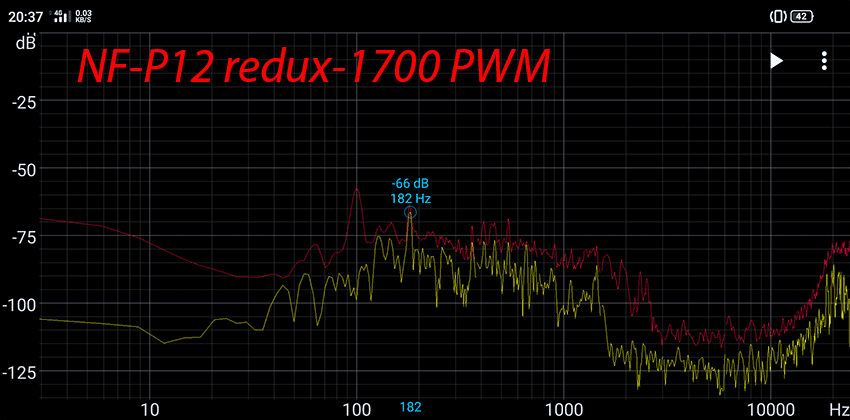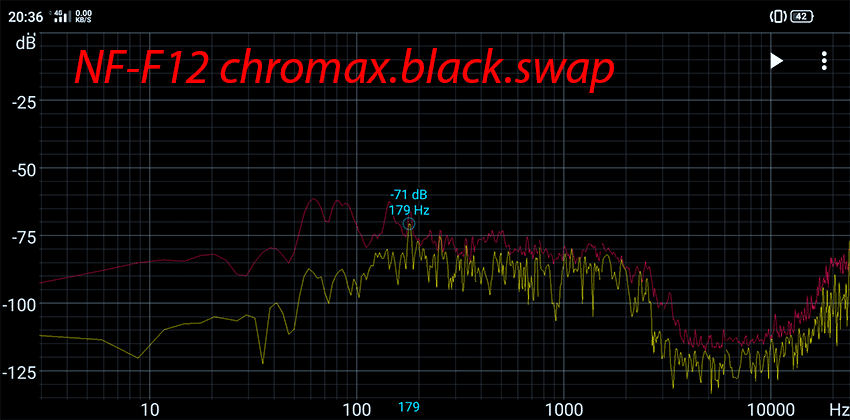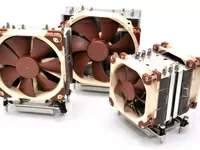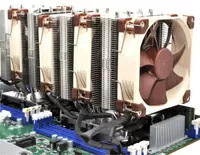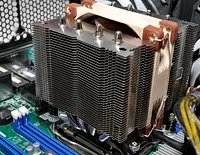Bag test of Noctua NF-F12 and NF-A14 chromax.black.swap fans
The management of Noctua constantly claims in their interviews that RGB in fans is nonsense, and it is better to spend time developing something really unique in terms of design than to succumb to the general red-blue-green madness. Of course, it sounds beautiful, but Noctua could not ignore the trends in the field of modding, and introduced the Chromax series, deliberately denigrating its best fans and coolers. In the Chromax series, the main color is black, which is emphasized by colored overlays or cable braids. For air coolers, there are pads that cover the ends of heat-conducting tubes, and generally change the appearance of cooling devices. When building a computer in white and black, the Chromax series is a godsend for the user, because not always the coffee-brown Noctua scale was in harmony with the colors of the computer, and you want to install Noctua.
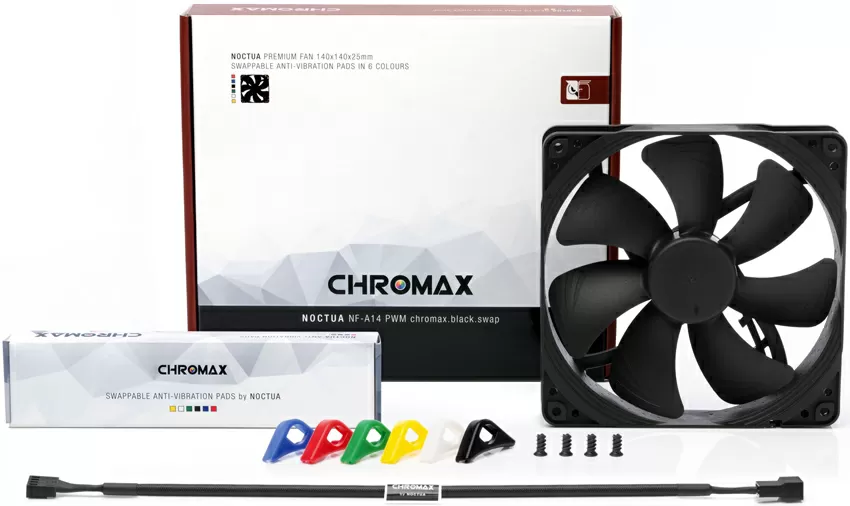
Today we will look at two fans: NF-F12 PWM and NF-A14 PWM of the chromax.black.swap series, and note how unusually this name is spelled, separated by a dot, like a domain name. Let's say right away: the characteristics of the Chromax series are completely identical to the usual beige fans, and the word swap is encoded with the possibility of replacing the rubber ears that serve for vibration isolation of the fan.
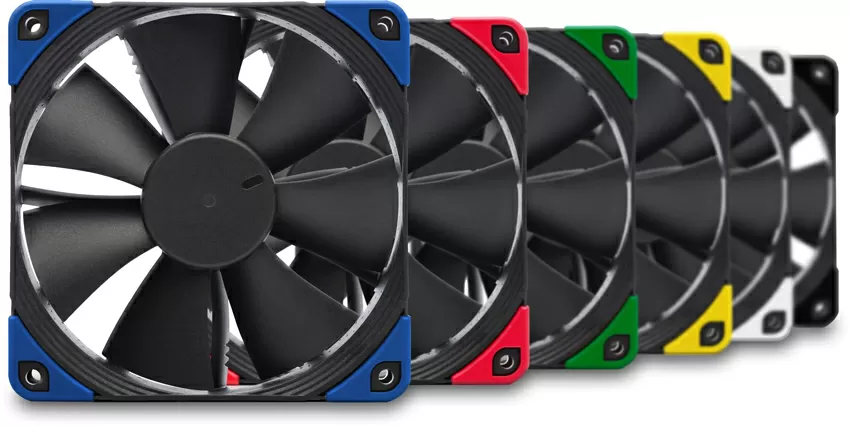
But let's not say that there are absolutely no differences at all. First, in the Chromax series, there are only PWM coolers: everything, after a decade and a half, it's time to recognize that PWM adjustment is everywhere and send 3-pin models to the landfill of history, especially since at 0% of the PWM pulse length, Noctua fans completely stop. So, the cooler cable can be detached so that it can be replaced with a red one from the NA-SEC1 kit, where there are as many as 4 pieces. In addition to the 30-cm cables, the list of Noctua accessories includes PWM splitters, anti-vibration studs and rubber corners, and the range of colors is very rich:
- Black
- Blue
- Green
- White
- Red
- Yellow
There are also traditional LNA adapters with resistors that lower the fan speed, and there are also manual PWM controllers with a turning knob.
As standard, chromax.black.swap fans come with a set of anti-vibration corners in one of six colors. Moreover, keep in mind that one color is only on one side, that is, four red ears, four black corners, and so on are included with the fan. If you want to install all 8 ears of the same color-buy a second set of anti-vibration pads.
Two types of fans came to us for testing: NF-F12 PWM and NF-A14 PWM,and let's start with the delivery kit.
The equipment of the fans is absolutely identical: together with the device itself, you will get four sets of lugs and screws for mounting in the case.Structurally, we have already considered both fans earlier.
The NF-F12 PWM model has a design that focuses the air flow, which allows it to pass further in the housing. This may be necessary in the case when the supply fan needs to "get" its flow to the video card, processor, or something else that needs to be cooled. Of course, an ordinary fan will not always cope with this task. Interestingly, Noctua has a special, powerful version of this fan, the IndustrialPPC-3000 PWM, designed for installation in industrial enclosures (servers, telecommunications cabinets), and there, of course, such a design with fins directing the flow is especially in demand.
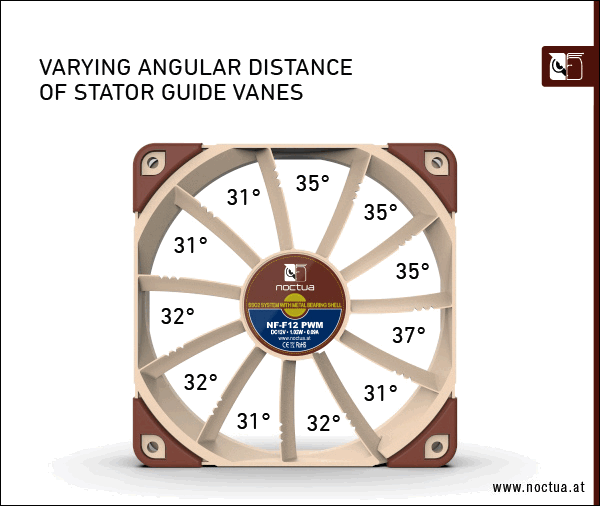
Here it must be said that the frame design has ribs that stabilize the air flow. These stabilizers are located at different distances from each other (from 31 to 37 degrees), and this point is very important in terms of noise control. Each time the fan blade passes over such an edge, an increased pressure occurs in this area, which creates an acoustic wave pulse. Noctua specialists found out that if the distance between adjacent stabilizers is different, then the same fan blade will create a different sound pulse over each of them, together these pulses will create an acoustic picture in a wider frequency range, which means that they will be easier to perceive by the human ear, and if you look at the measurements with a simple noise meter, the results of NF-F12 chromax. black. swap look fantastic!
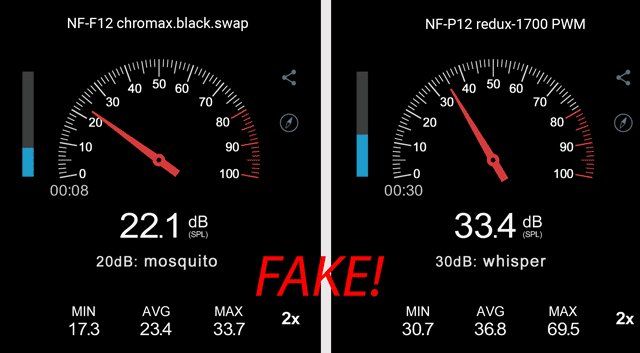
However, in fact, everything is quite different: I compared the NF-F12 PWM with the NF-P12 Redux fan, and by ear, it works quieter, although it has a higher rotation speed. Moreover, in the NF-F12, the noise comes directly from the central part of the motor, and is best heard at an angle of 45 degrees. That is, the fan feels the worst if it is mounted on the front of the housing to supply air to the housing. Let's see what the noise of both fans looks like on the spectrogram.
Technically, the diagram of the NF-F12 is more flat, and above 1000 Hz, in the most problematic area, the sound pressure is preserved, and in the model NF-P12 redux goes down. It feels like I can say that the sound of the NF-F12 is more corrosive, and puts more pressure on the brain than the NF-P12.
Of course, the chromax.black.swap series looks more spectacular due to the replaceable corners that contrast with the black color of the case, but how do they manifest themselves in the case? Two years ago, I built a small stand to demonstrate the efficiency of the fans. Its design is simple to the point of ugliness: a fan inflates a 120-liter garbage bag through an artificial obstacle in the form of a processor radiator. The faster the bag inflates, the more efficient the fan is.
Moreover, this test allows you to reflect on the ratio of efficiency and speed of rotation of the blades: do you always need a higher speed and does it make sense to have different aerodynamics of the impeller blades?
Pay attention to a typical example of a fan installed in the default housing, the Aerocool 12 RGB model, you can say, acts in the housing for beauty, and provides minimal air flow, so that when installing radiators, without options, these fans are subject to replacement, as well as all default ones. At the same time, there is no noticeable difference between two 120mm and one 140mm Noctua fans.
In general, such testing allows you to compare two fans of the same size, such as Noctua NF-F12 and NF-P12 Redux by pressure. According to the characteristics, the NF-P12 redux-1700 PWM has a slightly higher pressure due to the higher speed, and on the test bench we saw that the packet filling speed of these two models is almost identical.
| Pressure, mm. of water column | |
|
NF-F12 chromax.black.swap |
NF-P12 redux-1700 PWM |
|
2.61 |
2.83 |
| Power, Wt | |
|
0,6 |
1,08 |
Well, let's see which of them will "pull" whom, why connect them with working surfaces so that they blow on each other, and check whether one fan can inflate the package, overcoming the resistance of the second?
As you can see, the NF-P12 Redux slightly pushes the flow enough to shake the surface of the package, showing that the air still goes in the right direction, but it is not able to inflate the package. We can definitely say that if you need to install a fan that will be able to blow out the radiators at maximum speed, then it is better to choose the NF-P12 redux-1700 PWM.
Conclusions
Many years ago, when the trees were big and the grass was green, Noctua released the NF-P12 fan, which became a legend, and even today is highly valued in the secondary market. Today it is offered already in the redux series, in a faded, nondescript color, but in fact it is still the same legend, which is very difficult to repeat. I have written many times in reviews, and I repeat that if you just need a good fan - do not look for anything better - take it, and it is unlikely that you will find something better for the same money.
It's quite another thing when you have the task of building a beautiful, open computer in white, as is now fashionable. Yes, I admit, you will hardly find anything from the fan world on sale that will look more spectacular from the back than the NF-F12 with its ribs. If you want to focus on the bottom of the fan-yes, the NF-F12 with bright corners of yellow or red color will solve this problem better than any other model. Yes, he is a little inferior in characteristics to his colleagues, but not to say that it is directly somehow strong. True gourmets will even find their advantages in its noise, reminiscent of server fans.
As for the NF - A14 PWM chromax. black. swap, this model occupies a small niche of standard 140 mm fans. According to the characteristics, and in appearance, it is just a good fan, but nothing more: moderately quiet, moderately productive. Next to it, Noctua has NF-A15 HS PWM chromax. black. swap, which are attached to the same 140-mm holes in the case, but due to their "potbellied" design are more attractive for installation in plain sight.
In general, given the fashion for white cases and white-and-black assemblies, Noctua did well to release the chromax series, in which it stuffed all the sizes of its fans: from 80 to 200 mm, including a rare but very useful size of 120x120x15 mm. As usual, there is only one recommendation - Strong Buy!
Michael Degtjarev (aka LIKE OFF)
21/04.2021










